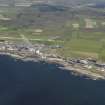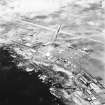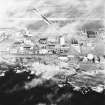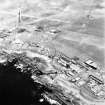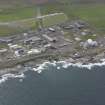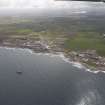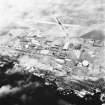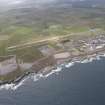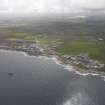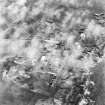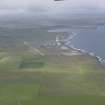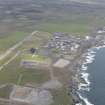Following the launch of trove.scot in February 2025 we are now planning the retiral of some of our webservices. Canmore will be switched off on 24th June 2025. Information about the closure can be found on the HES website: Retiral of HES web services | Historic Environment Scotland
Dounreay, Nuclear Research Facility
Scientific Research Establishment (20th Century)
Site Name Dounreay, Nuclear Research Facility
Classification Scientific Research Establishment (20th Century)
Alternative Name(s) British Nuclear Fuels Ltd; Hms Vulcan; Lower Dounreay
Canmore ID 7320
Site Number NC96NE 78
NGR NC 98760 67061
NGR Description Centred NC 98760 67061
Datum OSGB36 - NGR
Permalink http://canmore.org.uk/site/7320
- Council Highland
- Parish Reay
- Former Region Highland
- Former District Caithness
- Former County Caithness
NC96NE 78.00 centred 98760 67061
Dounreay Nuclear Power Development Establishment [NAT]
OS 1:10,000 map, 1988.
NC96NE 78.01 NC 98598 67144 Prototype Fast Breeder Reactor ('Golfball')
Location formerly entered as NC 98 67.
For (pre-existing) Dounreay airfield (centred NC 993 670), see NC96NE 87.
Dounreay experimental research establishment. Large industrial complex, the fast reactor housed in a giant eau-de-nil golfball.
J Gifford 1992.
Construction (1955 - 1974)
Dounreay Research Establishment began producing electricity in 1974.
Note (1994)
Dounreay Nuclear Establishement ceased operating 1994. Decommissioning will be completed around 2022-25.
R Paxton and Jim Shipway, 2007
Publication Account (2007)
Dounreay Nuclear Establishment
(Institute Civil Engineers Historic Engineering Works no. HEW 1708)
Dounreay, with its distinctive green sphere, lies 10 miles west of Thurso. The nuclear establishment was built to prove the attractive but, at the time, untried concept that fast reactors could generate electricity and at the same time breed additional fuel. The Dounreay Fast Reactor was housed in the sphere, which was fabricated from inside as illustrated. Around the sphere were fuel fabrication plants, chemical and metallurgical laboratories and fuel reprocessing plants.
Construction started in 1955, with Whatlings as the main civil engineering contractor. Numerous specialist contractors included the Motherwell Bridge Company who built the sphere. The reactor first became critical in 1959, and over the next 18 years proved itself a useful test bed for experimental
fuels and materials as well as a safe generator of electricity.
By 1966 sufficient experience had accumulated to justify a much larger prototype fast reactor which was built to the west of the sphere. Taylor Woodrow was the main civil engineering contractor for this prototype power station designed to supply 250MW to the national grid. It first became operational in
1974 and began supplying electricity the following year. In 1982 one of the primary advantages of fast reactors was demonstrated when fuel created within the reactor was recovered and returned to the reactor as new fuel.
By this time the energy crisis, which had initially prompted nuclear expansion, had been assuaged by the discovery and exploitation of North Sea oil and gas. As a result, the fast reactor research programme was wound down. The prototype power station ceased operating in March 1994 and radioactive facilities throughout the site are now being decommissioned.
R Paxton and J Shipway, 2007.
Reproduced from 'Civil Engineering heritage: Scotland - Highlands and Islands' with kind permission from Thomas Telford Publishers.

























